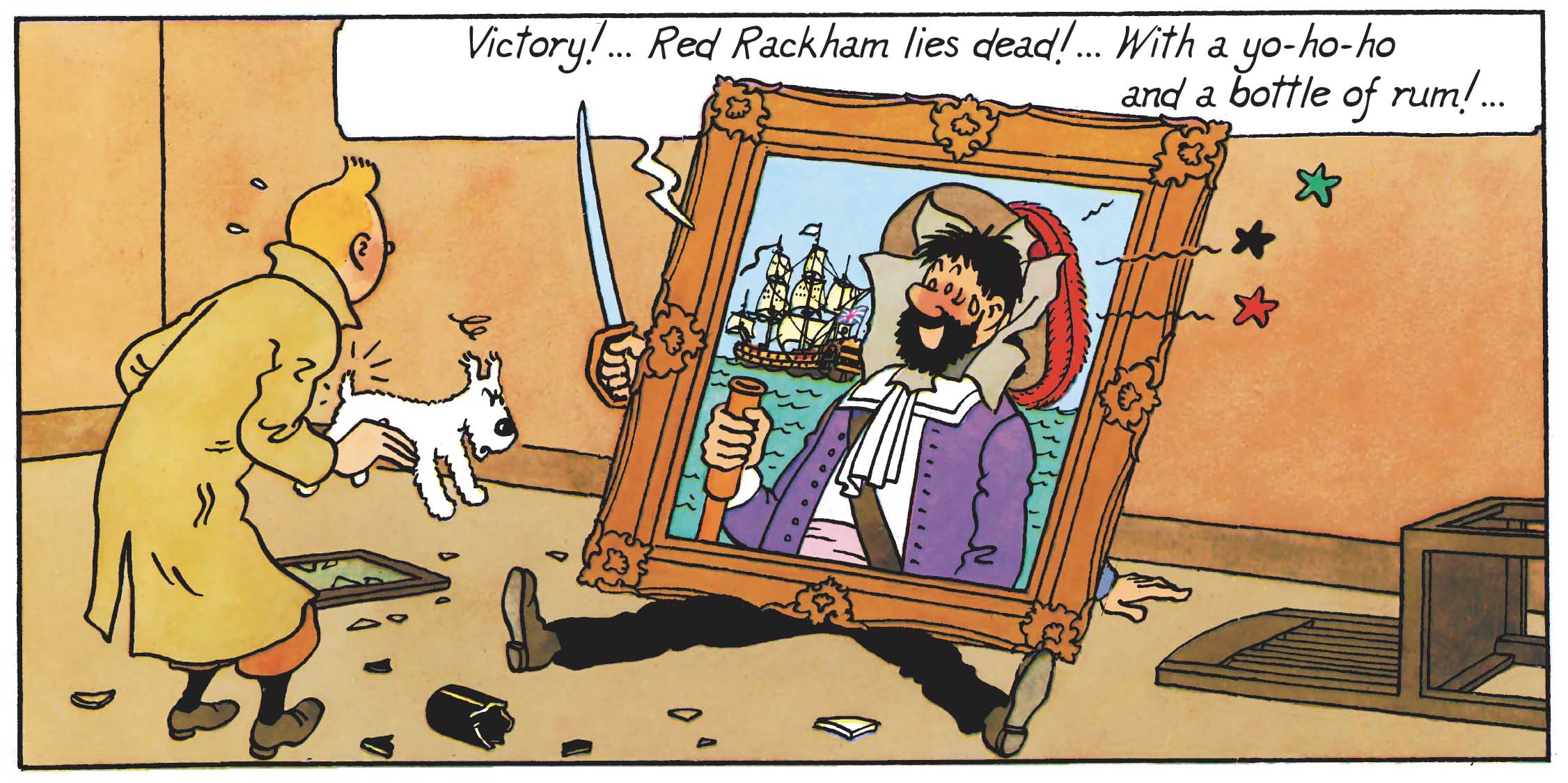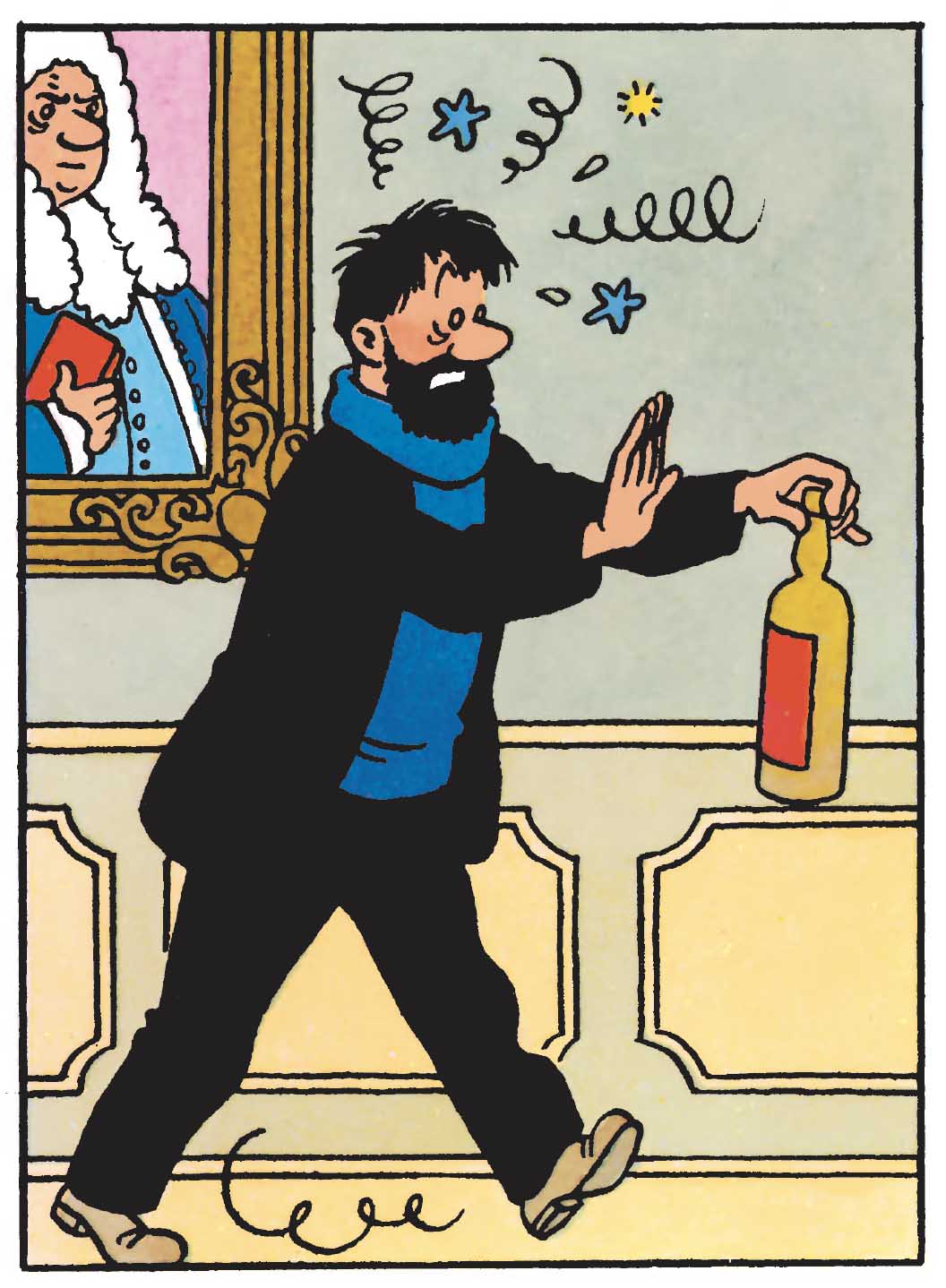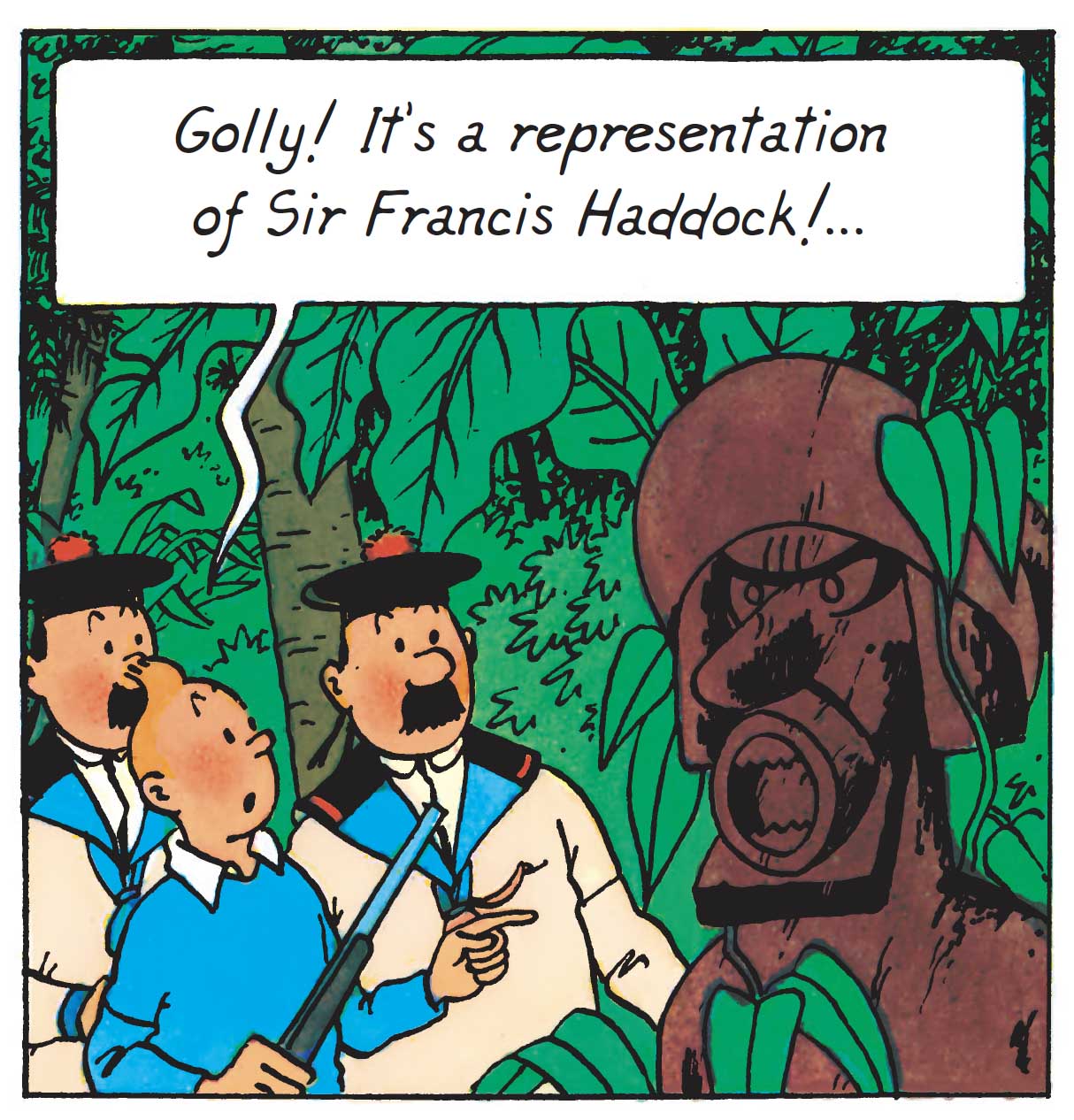The Speaking Vignette: picture within a picture
In The Secret of the Unicorn, Hergé slipped in a singular panel, almost trivial for a hurried reader, but remarkably rich for anyone who takes the time to look closer. We see Captain Haddock’s face superimposed on the painted portrait of his supposed ancestor, Sir Francis Haddock. A fine visual gag doubled with a projection into the past!

This staging condenses several dimensions of the narrative. It reminds us that Haddock is not just a hot-tempered sailor met by chance, but now a character tied to a genealogy. His simple face thus becomes a seal of filiation: in an instant, Hergé grants his captain a past, a memory, and a name anchored in time… along with a bump on his head.
The portrait borrows the codes of ceremonial painting: cloak, boots, feathered hat, sword. This solemnity echoes the galleries of castles where illustrious ancestors lined the walls. Into the aristocratic seriousness of the painting intrudes Haddock’s surly mug, with his weary features. The contrast is both comic and foundational for our ever-mistreated captain. The keenest observers have even noted another presumed portrait of his ancestor, this time clean-shaven, wigged, dressed in court attire, and bearing a face marked by aristocratic gravity.

A decisive detail completes the scene: behind Francis Haddock looms the ship he commanded, the Unicorn. This vessel is not mere background decoration, but the very heart of the story and of the inheritance. The painting thus celebrates not only a prestigious ancestor, but also an entire naval memory of which Haddock becomes the heir.
Yet the vignette also casts the shadow of an enemy. Francis Haddock exists only through his confrontation with Red Rackham, and the captain in turn inherits this ancestral rivalry. In this superimposition, it is not only a name that is passed down, but also a struggle: order against chaos, royal navy against piracy. The pose, the frame, the costume imitate the gravity of a historical portrait, with the reader accepting its plausibility as if it were an authentic testimony from the seventeenth century.
In a single image, Hergé plays on every register: solemnity and derision, history and invention, archive and gag. The superimposed face is not a gratuitous fancy but a narrative act: it propels Haddock beyond the role of mere comic sidekick to make him the heir of a lineage, a château, and even a nemesis.
Thus Hergé turns a panel into a document, giving weight to fiction, inscribing a character into long-term history. These images sometimes become, as here, true archival pieces of an imaginary world… But wait, the collection is still missing a piece… yes, an exotic fetish that looks exactly like Sir Francis Haddock. Squint your eyes, and you’ll never spot the trick!

Texts and pictures © Hergé / Tintinimaginatio - 2025




 News
News Forums
Forums E-books
E-books

